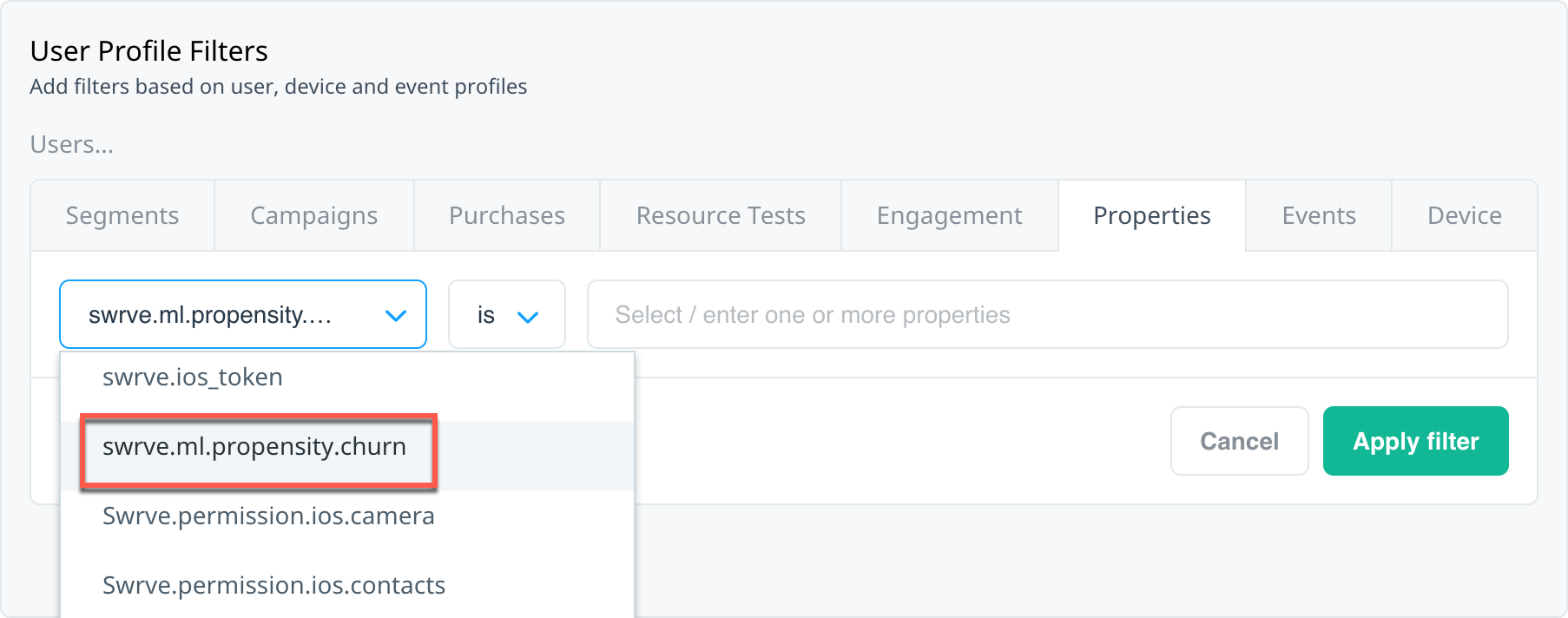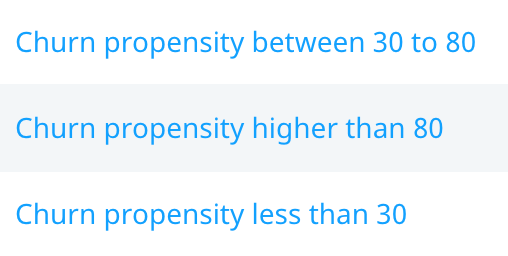Targeting users by churn propensity
What are churn propensity scores?
Swrve generates a score for each user who has not already churned from your app on a scale of 0 to 100 indicating how likely they are to churn within the next 30 days—that is, how likely they are to stop using your app forever. A score of zero indicates no predicted chance to churn, and 100 indicates predicted certainty of churn.
How does Swrve generate churn propensity scores?
We use a proprietary combination of state-of-the-art machine learning tools to generate a score for each user based on a multitude of input signals from their activity and state. We augment our data with a wide range of custom engineered features that add predictive power. Our models are evaluated and retrained regularly to prevent concept drift and ensure our scores have the highest possible level of accuracy, precision, and recall.
How do churn propensity scores appear in Swrve?
A single user property called swrve.ml.propensity.churn is set for each user. This property is available in the segment and audience builder tools on the Properties tab. When building segments or audiences, use propensity scores along with all the other existing user properties and behavior filters to pinpoint your target.
The scores are also available in our user database exports for further analysis.
False positives and false negatives
As with any predictive system, there will always be some unavoidable instances of false positives and false negatives:
- False positive – user was predicted to churn but did not.
- False negative – user was not predicted to churn but did.
The advantage of churn propensity scores in such situations is that you can set a threshold that makes sense for you depending on the type of campaign you want to run. If you are running a campaign that offers a high value incentive such as a discount on a subscription, you can set the churn threshold score to 95 or higher, thereby minimizing the false positive rate and your risk of giving something away to a user who was going to stay anyway. If you want your campaign to have a wide reach, you can set the threshold to 50 thereby decreasing the false negative rate.
Use cases
Use churn propensity scores to create proactive campaigns that target users before they churn. For example, create reporting segments and campaign audiences based on simple criteria, such as low, medium, or high chance of churning. In turn, use these audiences to create more targeted campaigns to improve retention and anti-churn, as well as minimize the risk of experimental upsell campaigns.
Some other examples are:
- Encourage users with a churn score above 80 to come back to the app using the largest incentive. By delivering a push notification that links to an in-app message, users are immediately connected to the offer thus increasing the likelihood of retention.

- Target those users with a churn score above 80 and who have made more than five purchases. These users may need a nudge with a smaller incentive to re-engage with the app.

How often are the scores updated?
Scores for users are updated every 30 days, from the date the feature is first enabled for your app.
Next steps
- Learn how to target your campaign audiences with any combination of user properties and user behavior criteria. For more information, see Targeting campaign audiences.
- Create detailed reports using churn propensity-based segments to track the results of your anti-churn campaigns. For more information, see Trend Reports.

